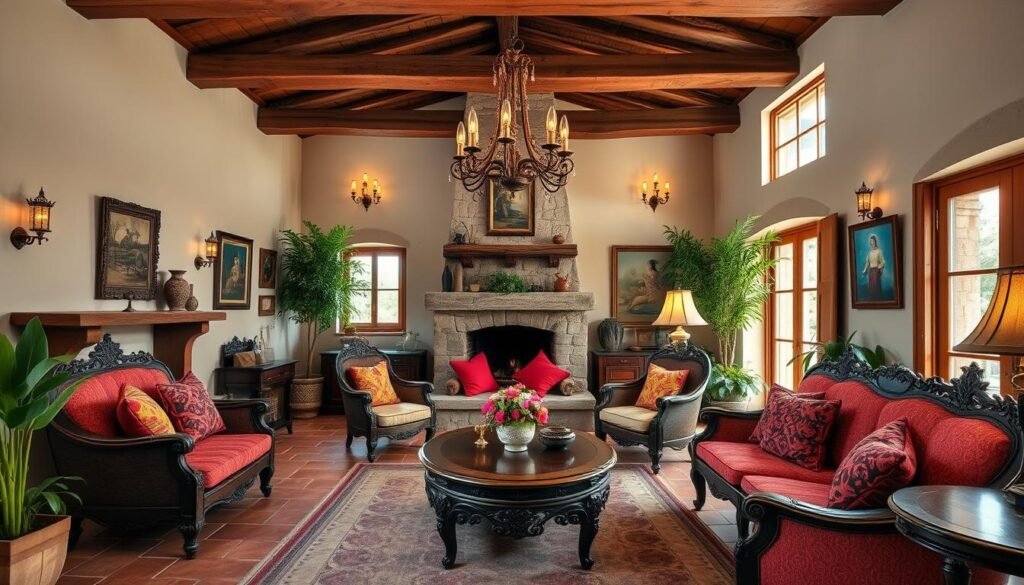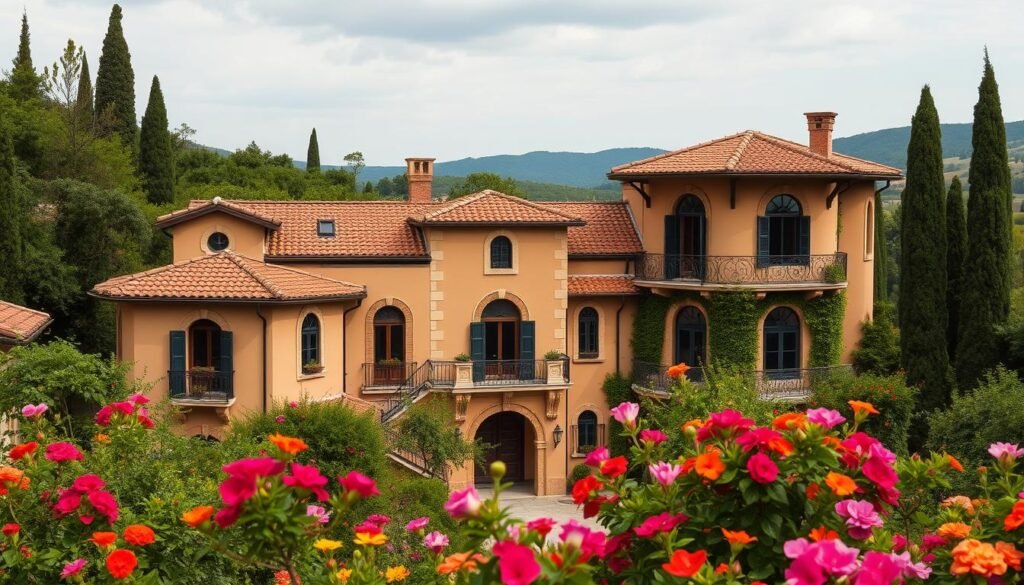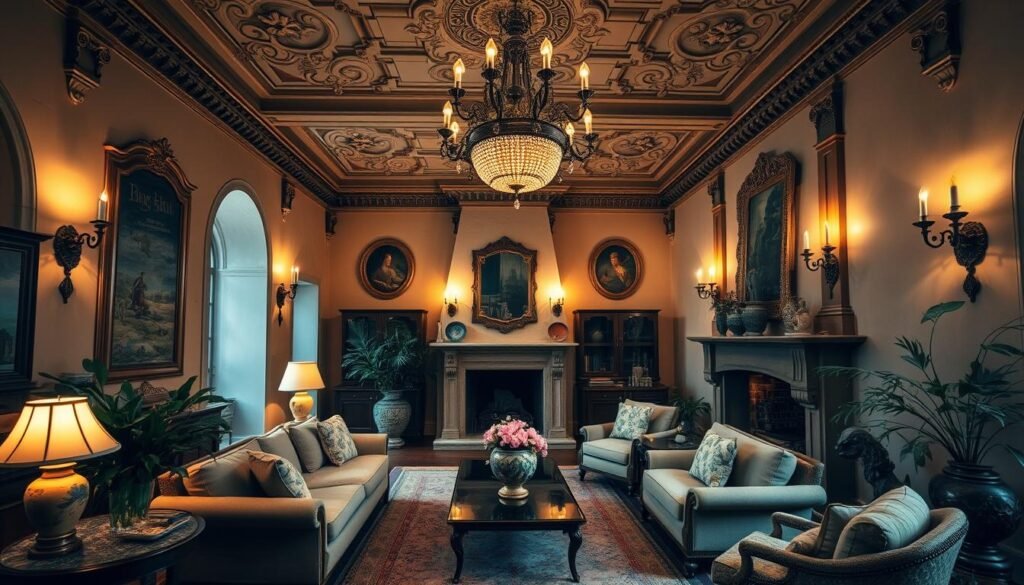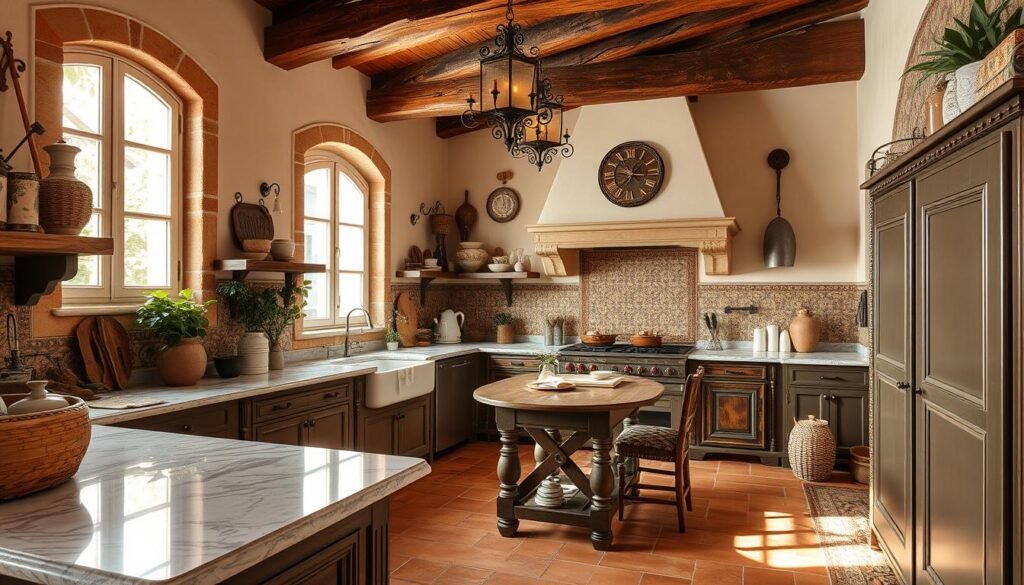If you want to add elegance and luxury to your home, you’re in the right spot. Italian homes mix tradition and modernity beautifully. They focus on quality and design in every corner.
Italian design is all about simplicity, function, and style. You’ll see architectural touches like exposed beams and frescoed walls. The look is sophisticated, with neutral colors and bold accents.
Whether you love Tuscan charm or modern Italian style, the secret is balance. Choose furniture, lighting, and accessories that work together. This creates a beautiful, inviting space that stands the test of time.
Gallery
Understanding the Essence of Italian Interior Design
Italian interior design is known for mixing old and new beautifully. It values quality craftsmanship deeply. This mix has made Italy a top name in design. Luxury brands like Missoni, Gucci, and Fornasetti show off the Italian style in their homeware.
Balancing Traditional and Modern Elements
Italian designers are experts at mixing the old with the new. They use traditional materials and techniques but add a modern twist. This creates a perfect blend of timeless beauty and modern style.
The Role of Quality and Craftsmanship
Quality and craftsmanship are key in Italian design. Italian artisans are known for their skill and attention to detail. They work with materials like marble, wood, and glass. This makes Italian products last long and look great, often becoming family treasures.
Key Design Principles
Italian design focuses on simple colors and bold accents. It also uses unique lighting and furniture with clean lines. These elements add sophistication and a touch of luxury, making it distinctly Italian.
“Italian design is a blend of beauty, function, and feeling, making spaces both stunning and welcoming.”
The Salone del Mobile in Milan is a big design event. It shows off the latest in Italian furniture and decor. Over 370,000 people visit each year. It proves the lasting charm of Italian style and its impact on brands and design principles globally.

How Do Italian Decorate Their Houses: Core Elements
Italian home decor is known for its core elements that define the Mediterranean style. These features capture the essence of Italian architecture. They also create a warm and inviting atmosphere, reminiscent of Italy’s rich cultural heritage.
Exposed wooden beams are a common feature in Italian homes. They make a space feel larger and add a rustic or contemporary touch. Vaulted ceilings, inspired by churches, enhance natural light and add grandeur.
Terracotta flooring, or ‘cotto,’ is a staple in Italian houses. It provides a rustic and natural atmosphere with its varied shapes, styles, colors, and ages. Authentic Tuscan houses often have original doors with medieval ironmongery, elegant carvings, metal bars, and stone surrounds, adding to their historical appeal.
Italian interiors favor natural earthy tones like cream, beige, honey, almond, warm red/terracotta, brown, and plaster peach. These colors, combined with quality furniture, lighting, and artwork, create a timeless and elegant atmosphere that is quintessentially Italian.
Frescoes are a distinctive feature of Italian interiors. They involve applying water-based pigments onto wet plaster, creating vibrant, long-lasting artwork on walls. This technique adds visual interest and reflects Italy’s rich artistic heritage.
The core elements of Italian decor ideas and Mediterranean style come together to create a harmonious and inviting home italian style. This style celebrates Italy’s architectural traditions, natural beauty, and refined craftsmanship.

“Italian furniture is renowned for its craftsmanship, quality, and elegance, featuring curved lines and soft shapes designed for elegance and comfort.”
Architectural Features That Define Italian Homes
Italian architecture is famous for its rich history and unique design. It combines ancient Roman styles with modern touches. This blend creates homes that are both beautiful and functional.
Exposed Beams and Vaulted Ceilings
Italian homes are known for their exposed wooden beams and stone ceilings. These features add warmth and show off the skill of Italian builders. They make the homes feel welcoming and special.
Original Doors and Windows
Many Italian homes keep their original doors and windows. These pieces are full of history and charm. They often have detailed carvings and old ironwork, adding to the home’s beauty.
Natural Stone and Terracotta Elements
Natural stone and terracotta are key in Italian architecture. Terracotta tiles and stone walls give homes a rustic feel. These elements make Italian homes stand out.

“Italian architecture is a testament to the enduring power of traditional craftsmanship and design, seamlessly blending the old and the new to create timeless, inviting spaces.”
Color Schemes and Natural Tones in Italian Decor
Italian interior design often uses warm, earthy tones. The Italian color palette includes soft creams, beiges, and terracotta. These colors remind us of Italy’s sunny landscapes.
Accents of earthy tones like sage green, mustard yellow, and brown add depth. They make the neutral colors more interesting.
The colors in Italian decor come from nature. They’re inspired by vineyards, olive groves, and the coast. Textured walls, like lime-washed plaster or exposed stone, add to the timeless feel.

Traditional Italian homes have a muted, rustic look. But modern Italian design can be bolder. All-white spaces with bright blues, reds, or greens are fresh and modern.
Italian decor is all about warmth and harmony. It reflects Italy’s natural beauty and long traditions.
Furniture Selection and Placement Strategies
Furnishing your Italian-inspired home is key to its look. Italian homes mix antique and modern furniture beautifully. This mix makes the space both beautiful and cozy.
Statement Pieces and Family Heirlooms
Italian homes love to show off antique pieces and family treasures. These Italian furniture items bring history and personality to the room. They also show off the homeowner’s style and heritage.
Combining Comfort with Style
Comfort is a big deal in Italian design. You’ll find big, comfy sofas and extendable dining tables. These pieces mix modern Italian design with practicality. This way, Italian homes are welcoming and perfect for relaxing and socializing.

“Italian furniture design is not just about aesthetics; it’s about creating a harmonious and livable space that reflects the culture and values of the people.”
In Italian homes, furniture placement is guided by the architecture. Fireplaces and doorways are natural highlights. Symmetrical setups bring balance, while asymmetrical ones add flair and guide the eye.
Lighting Choices in Italian Interior Design
Lighting is key in Italian interior design. Modern Italian homes often feature statement chandeliers as room highlights. These Italian lighting pieces combine traditional Murano glass with modern styles. They add elegance and grandeur to any space.
Italian designers also use table and floor modern lamps to warm up rooms. These lights not only light up areas but also set the mood of the home.
Natural light is highly valued in Italian design. Homeowners use shutters and curtains to manage sunlight. This careful approach shows the importance of blending function and beauty in Italian design.
“Lighting is not just about illumination; it’s a symphony of artistry and purpose that elevates the entire Italian interior design experience.”
Italian lighting design balances bold pieces with subtle touches. This creates a cohesive and stunning environment. It captures the essence of Italian elegance perfectly.

Incorporating Traditional Italian Materials
Italian interior design is famous for its top-notch craftsmanship and use of traditional materials. It features stunning marble and stone, warm wood, and metal elements. These materials are key to creating authentic Italian decor. Ceramic tiles and Murano glass add luxury and charm to any space.
Marble and Stone Applications
Marble and natural stone are essential in Italian design. They are used in flooring, countertops, and decorative accents. This adds elegance and timelessness to any space.
The unique patterns in Italian marble make spaces visually interesting. They instantly enhance the aesthetic of any room.
Wood and Metal Elements
Wood is a common material in Italian interiors, adding warmth and beauty. It ranges from rustic wooden beams to sleek furniture. This versatility showcases Italian craftsmanship.
Wrought iron is used for decorative touches, bringing old-world charm to spaces.
Ceramic and Glass Features
Ceramic tiles, including hand-painted ones, are a must in Italian kitchens and bathrooms. They highlight the country’s rich artisanal heritage. Murano glass, known for its quality and designs, is used in lighting and decorative objects.
Using these traditional Italian materials makes a space elegant and timeless. It celebrates Italy’s lasting design legacy.

Modern Italian Design Trends
Contemporary Italian style focuses on minimalism and quality materials. Brands like Gucci and Missoni bring their unique looks to home decor. Italian homes now have open layouts, sleek kitchens, and a mix of old and new styles.
Technology is becoming a big part of home design, with smart features on the rise. Italians mix rustic and modern styles, keeping old buildings’ charm while adding new furniture. Warm tones like sienna are popular, making spaces calm and stylish.
Metallics like brass and copper are used in Italian furniture for a sophisticated look. Lighting is key, with Italian chandeliers adding impact and authenticity to rooms.
Traditional Italian furniture often has a rustic feel, made from woods like oak and walnut. These pieces aim to create large, elegant spaces for family and friends. They blend practicality with beauty.
Italian design often uses terracotta colors, inspired by the sun. Mixing old and new decor is a big trend, creating cozy yet elegant spaces. Italian kitchens are known for their unique character, showing the heart of the home.
Patterned tiles, like detailed designs, are popular in Italian decor. They show the country’s creativity and innovation. Italian designers focus on creating lighting that’s both beautiful and functional.

“Italian design is all about finding the perfect balance between traditional and modern elements, creating spaces that are both timeless and on-trend.”
Conclusion
Italian interior design mixes classic beauty with today’s needs, making spaces warm and welcoming. It shows the true spirit of Mediterranean style. By combining old and new, using top-notch materials, and valuing skill, Italian design fits many tastes and ways of life.
Whether you love the cozy feel of natural stone or the modern look of simple designs, the Italian interior design guide has lots to offer. By following Italian design’s key elements, you can make a Mediterranean home style that looks great and feels wonderful.
Starting your journey to add Italian charm to your home? Focus on quality, skill, and mixing old with new. This way, you’ll make a space that’s not just beautiful but also heartwarming. It will show the lasting beauty and charm of Italian interior design.
FAQ
What are the key elements of Italian interior design?
Italian interior design mixes old and new, valuing quality and skill. It’s known for its understated elegance, clean lines, and love for design.
What are some distinctive architectural features in Italian homes?
Italian homes stand out with features like exposed beams and stone ceilings. They also have arches, columns, and doors with medieval ironwork and carvings.
What color schemes are common in Italian interior design?
Italian interiors often use natural colors like cream, beige, and warm terracotta. Green and yellow accents are also popular, inspired by nature.
How do Italians incorporate lighting in their homes?
Lighting is key in Italian design. Homes feature bold chandeliers that blend old-world craftsmanship with modern styles, like Murano glass.
What are some traditional Italian materials used in home decor?
Authentic decor in Italy focuses on materials like marble, stone, and wood. Wrought iron, ceramic tiles, and Murano glass are also used.
How do Italian design trends evolve with the times?
Italian design is moving towards minimalism, focusing on quality. Brands like Gucci and Missoni have brought their unique styles into home decor.
